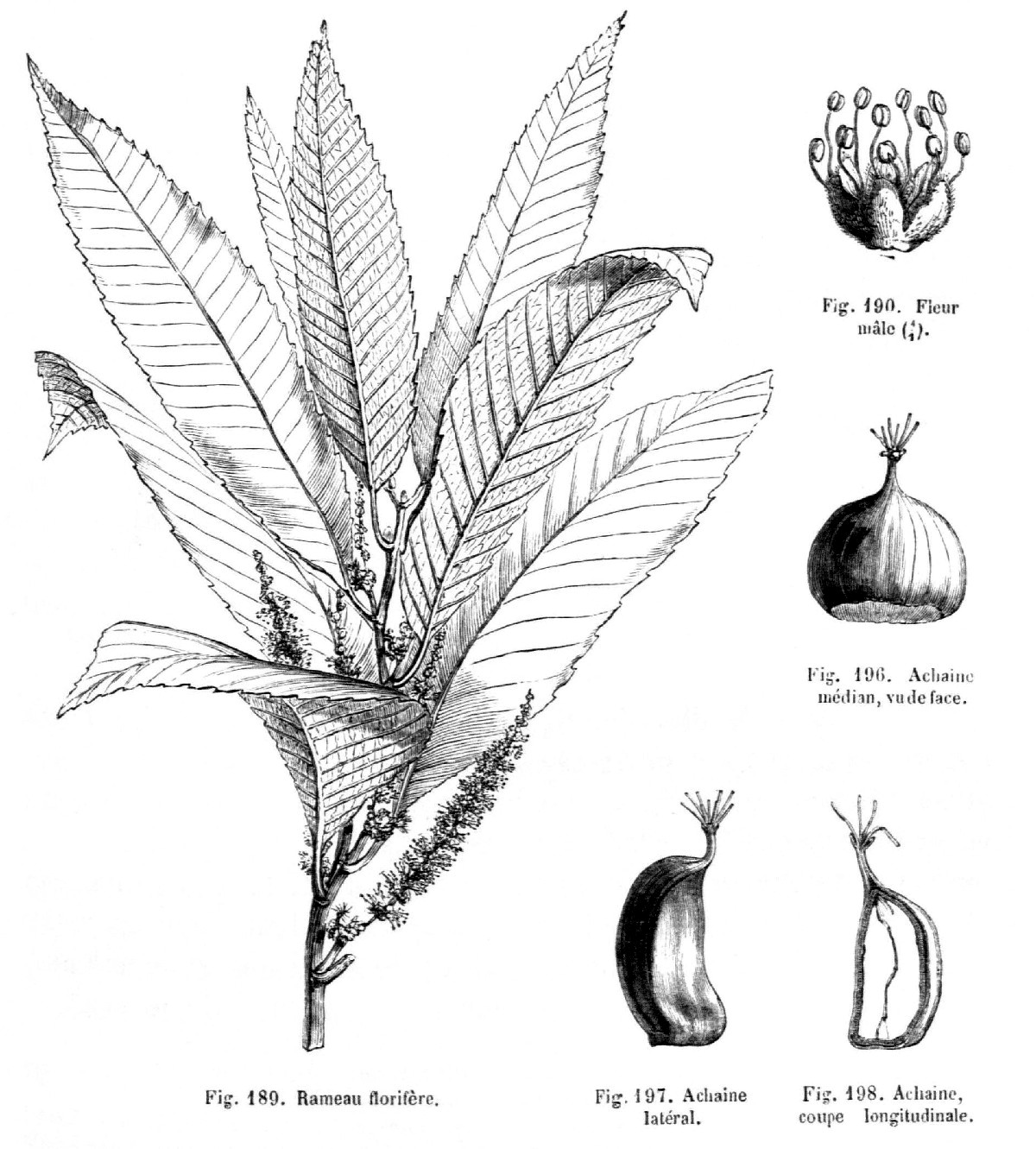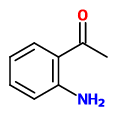Castanea sativa Mill. - syn. Castanea vesca Gaertn.; Castanea vulgaris Lam. - Fagaceae
European chestnut, sweet chestnut, Spanish chestnut, Esskastanie, Ess-Kastanie, Marone
Deciduous tree, up to 30m tall, native to the Mediterranean region, cultivated and naturalized in Europe, Southwest Asia, North Africa; leaves elliptic to ovate-lanceolate, serrate; male flowers in spikes, female flowers in clusters of 3 at the base of the spike; fruit a nut enclosed in a spiny involucre.
The peeled seeds (sweet chestnuts, maroni) own a delicately sweet, nutty and slightly floury taste. The gluten-free flour can be used by patients with celiac disease as a grain substitute.
[The Chestnut: A Multipurpose Resource for the New Millennium., Giancarlo Bounous, In C.G. Abreu, E. Rosa, A.A. Monteiro: Proceedings of the Third International Chestnut Congress. Acta Horticulturae, Vol.693, 2005, 33-40]
„Chestnuts are mainly consumed roasted. Three native varieties and a French one were roasted and submitted to sensory and chemical analysis in comparison to a commercial marrone variety imported from Italy. Weight loss due to roasting ranged from 23 to 30%. Roasted chestnuts contained 260-350 g kg-1 starch, 50-102 g kg-1 sucrose, 0.5-4.4 g kg-1 fructose, trace amounts of glucose and 9-15 g kg-1 total fatty acids. The main fatty acid in chestnuts was linoleic acid, amounting to 49% of total fatty acids. Sensory analysis showed that acceptance of chestnuts was highly dependent on sweetness, which was related to sucrose content. It should be at least 90 g kg-1. Varietal differences were observed in this study and it was shown that roasting caused little change in composition. Thus chestnut varieties used for roasting have to be selected accordingly. The commercial variety Marrone di Cuneo confirmed its superiority with regard to suitability for roasting.“
[Effects of roasting on chemical composition and quality of different chestnut (Castanea sativa Mill) varieties., Künsch, U., Schärer, H., Patrian, B., Höhn, E., Conedera, M., Sassella, A., Jelmini, G., Journal of the Science of Food and Agriculture, Vol.81(11), 2001, 1106-1112]
„The volatile flavor compounds of roasted Italian chestnuts, which have not been studied prior to this report, were determined by capillary gas-chromatography with a mass selective detector. Samples were obtained by SPME directly from the headspace of freshly roasted and ground chestnuts as well as by previous extraction with dichloromethane. Monoterpenes and derivatives of butane, pentane, hexane, and heptane were identified as important aroma impact compounds. γ-Butyrolactone (12.8%), γ-terpinene (9.2%), furfural (6.3%), benzaldehyde (7.2%) and 4-methyl-2-pentanone (5.3%) were found in concentrations higher than 5.0% (calculated as % peak area of GC-MS analysis using a nonpolar column).“
[Volatile compound analysis of SPME headspace and extract samples from roasted Italian chestnuts (Castanea sativa Mill.) using GC-MS., Krist, S., Unterweger, H., Bandion, F., Buchbauer, G., European Food Research and Technology, Vol.219(5), 2004, 470-473]
„Gluten-free breads formulated with different chestnut/rice flour ratio with/without gum blend and emulsifier DATEM were evaluated using rheological, baking and sensory measurements… According to baking tests, the breads containing chestnut/rice ratio at 30/70 with addition of the blends of xanthan-guar and emulsifier had the best quality parameters.“
[Utilization of chestnut flour in gluten-free bread formulations., Demirkesen, I., Mert, B., Sumnu, G., Sahin, S., Journal of Food Engineering, 101(3), 2010, 329-336]
„1-Phenylethanol and 2′-aminoacetophenone are the most powerful botanical markers of chestnut honey. Additionally, cis-cinnamyl alcohol, and p-hydroxyacetophenone were found exclusively in chestnut honey. Organic extractives from whole chestnut flowers were predominated by 1-phenylethanol, nonanal, benzyl alcohol, and nonanoic acid. Of the 16 compounds found in the flower extract, 13 were present in honey as well. Some of them are transferred directly to honey, while in other cases modification reactions take place.“
[Alissandrakis, Eleftherios, et al. „Investigation of organic extractives from unifloral chestnut (Castanea sativa L.) and eucalyptus (Eucalyptus globulus Labill.) honeys and flowers to identification of botanical marker compounds.“ LWT-Food Science and Technology 44.4 (2011): 1042-1051]
„The main compounds of the chestnut catkins were acetophenone (21.5%), methyl salicylate (13.4%), nonanal (10.9%), and linalool (7.5%), whereas the major constituents of the honeys were 2-aminoacetophenone (11.4%), benzaldehyde (10.8%), acetophenone (7.0%), nonanoic acid (5.9%), octanoic acid (5.0%), and 3-furaldehyde (4.9%).“
[Yang, Yin, et al. „Melissopalynological origin determination and volatile composition analysis of Corsican “chestnut grove” honeys.“ Food Chemistry 132.4 (2012): 2144-2154]

Baillon, H.E., Histoire des plantes, vol.6 p.231, fig.189,190,196-198 (1875-1877) [A. Faguet, as Castanea vulgaris Lam.]
Castanea sativa © Rolf Marschner (2009),
www.botanische-spaziergaenge.at

